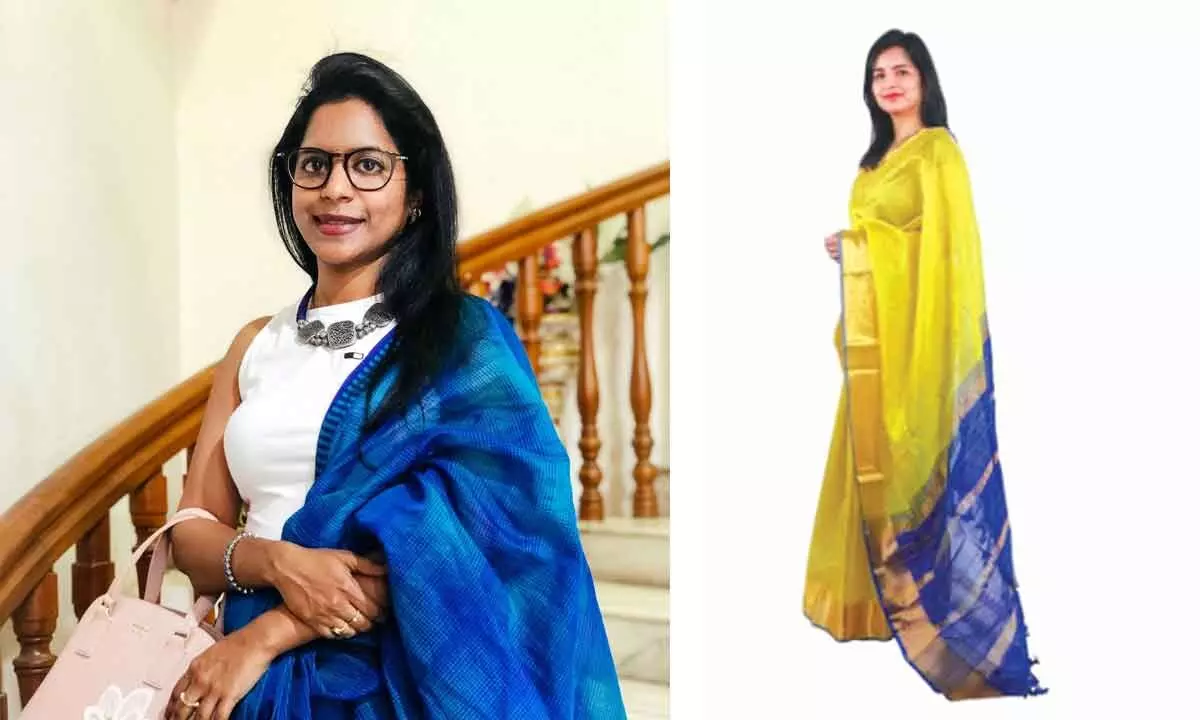The glory and story of Chirala

The purists of the Chirala legacy – of sarees and handkerchiefs, are today facing the biggest blow to their livelihoods. With the allowance of powerlooms, and digitised design and embroidery units that can optimise time and produce cheap lookalikes in large numbers, the Chirala cluster has almost lost its original glory.
One of the rarest clusters that is equally proficient in both cotton and silk weaving, Chirala has fallen prey to the clutches of power-looms. Unlike the old times, when the pattern of a saree used to be woven into it, now a computer does it all
A town synonymous with its forte, Chirala rightly lives up to its name of being the hub of saree production. Originally called Kshirapuri – (loosely translated as 'the town of milk'), the name Chirala was christened during the freedom struggle times.
One of the most well-known clusters in the handloom industry, Chirala owes its popularity to its wide variety of fabrics. Situated by the Bay of Bengal, this coastal town is located in the Prakasam district of Andhra Pradesh. Owing to a thriving textile market, Chirala is also known as 'Mini Mumbai'. The sarees made in Chirala have a characteristic softness and longevity to them. Even Pochampally and Puttapaka weaves are today known for their ikkats, but amazingly enough, they also find their way back to Chirala. Chira – meaning saree in Telugu – turned into Chirala, to denote the spirit of this town, because the villagers occupying Chirala were all experts at handloom weaving and paddy cultivation.
The weavers pertaining to the Chirala cluster are often classified into kooly, independent, shed and master category of weavers. However, their lineage has been traced to the weavers from Padmasali and Devanga communities. They are famous for producing cotton sarees as well as seico sarees – which are a fine blend of cotton, silk fibers and kuppadam (of the Gadwal type). Apart from this, Chirala is also famous for producing the more traditional types of sarees made of zari (gold-like glittering metallic thread), as well as dhotis – but those have been limited to the local market. The weavers in Chirala generally employ the 'fly shuttle loom' technique. Additionally, the 'real madras handkerchiefs' with silk and zari are also manufactured here on jacquard looms, which have been exported to Africa from during the Independence times. Besides all of this, Chirala sarees also feature another design known as 'hand butta' wherein the colours are blended amidst the zari design.
The purists of the Chirala legacy – of sarees and handkerchiefs, are today facing the biggest blow to their livelihoods. With the allowance of powerlooms, and digitised design and embroidery units that can optimise time and produce cheap lookalikes in large numbers, the Chirala cluster has almost lost its original glory. One of the rarest clusters that is equally proficient in both cotton and silk weaving, Chirala has fallen prey to the clutches of power-looms. Unlike the old times, when the pattern of a saree used to be woven into it, now a computer does it all. And it doesn't take a wizard to figure it out either. If one were to decipher the origin and authenticity of the saree, it just takes one simple step – of turning the saree around. In the case of a hand-woven saree, the threads of the pattern woven into the saree can be seen across the entire width of it, however, in the case of a power-loom, only the imprint can be seen. And in less than eight minutes, a machine can turn a power-loom into a saree, as opposed to several hours of laborious and artistic work put in by a weaver to produce an authentic handloom saree. Perhaps this is one of the reasons why this cluster never could receive a GI tag.
Despite the growing domination of machines in the world of handlooms, Chirala continues to be a city mushrooming with weavers. A city that is still a hub for sarees, lungis, dress materials, towels and thaans (running fabric), Chirala's focus seems to be on the export market as of today. As for its glory, Chirala is still revered for its contributions.
A cluster that could execute the wildest idea of fitting a saree into a matchbox, is hoping to save itself from the extremities of modernization. Just as nothing should ever make you feel the need to change to the growing demands of the world, please do keep Chirala in your prayers for it to regain its original glory of being the handlooms hub and not continue to lose its originality to the pressures of demands.
(The writer is a handloom and handicraft enthusiast. She is also a member of crafts council. Instagram handle: Rajeswariramachander)


















